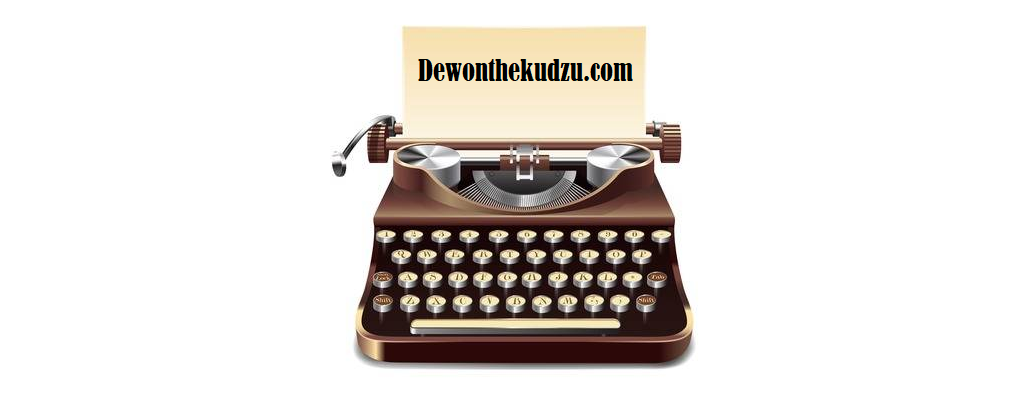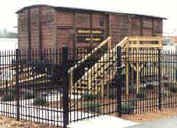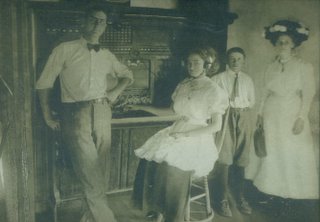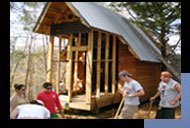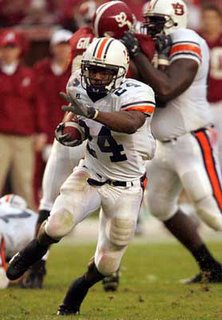
By Cappy Hall Rearick
My granddaddy had a dying wish. He asked us to buy MaMa a puppy so she wouldn't be lonesome after he floated up to cigar heaven.
So the day after PaPa's funeral, we took a trip to the animal shelter where we found Kudzu, the sweetest, ugliest mutt ever born. MaMa fell instantly in love, and the two of them remained side by side till the day she drew her last.
Which brings me to her final request. She asked us to take Kudzu home and at his death to bury him in the plot between her and PaPa, at the very site we had mistakenly thought belonged to one of us. At the time, we bobbed our heads up and down in agreement like dashboard dolls. We were sad and would have agreed to pretty much anything. Little did we know that the city sanitation department had very specific ideas about where Kudzu should rest, following his lazy, but final demise.
"What they don't know won't hurt em," Daddy announced the day Kudzu gave up the ghost.
He took the dog out to the cemetery late one night, intending to bury him according to MaMa's dying wish. The city and their rules could just kiss his foot, he said. I went out there with him.
We couldn't go in the front entrance because the gates were locked. I thought that was curious. "Why would they lock up the cemetery at night, Daddy? And please don't tell me it's because people are dying to get in there."
Daddy explained about people stealing funeral flowers. "I remember once when I was young, one of my buddies stole flowers off a grave to give to his sweetheart," he said.
"That's tacky, Daddy." Even so, locking cemetery gates so people wouldn't steal carnations seemed like overkill to me.
"Still," he said, "others dig up the graves, open the coffins and rummage around in there for valuables."
"You gotta be kidding. What kind of valuables?" I couldn't imagine anybody brave enough to feel around inside a dead person's eternal bed.
Daddy laughed. "Rings and watches. You'd be surprised how many people think they can take it with them."
He turned off his headlights and we drove around to the side of the grave yard where it was so dark we couldn't even find the flashlight button. Kudzu remained in the trunk, wrapped like a baby in his ratty old blanket. We parked under some trees and Daddy said, "Come on. I'll hoist you over the fence. Then you can stay there till I come back with Kudzu."
"Whoa! Then what?"
"Then I'll lower him over to you and you can hold him while I crawl over the fence."
At that moment, my eyes grew four sizes larger and, for the first time in my life, my mouth would not close. "You want me to hold a dead dog in a dark cemetary?"
"It'll just be for a minute, Sweetie. It won't take me any time to get over the fence, but I can't do it and hold the dog. If he's too heavy for you, put him down on the ground."
Heavy or not, that's exactly where he went.
I kept a lookout while Daddy dug a hole between MaMa and PaPa. He dug pretty deep and was all sweaty by the time he got finished.
Daddy had thought of everything, even a Bible. When all the dirt was packed tightly over Ol' Kudzu, Daddy told me to jump up and down on top of the soil so it wouldn't look like new dirt. Then he began to read from the Bible. After a verse or two, he said "Amen," and snapped the good book closed.
"Tomorrow, we'll come out here and plant a big azalea bush on top. That way, nobody will ever suspect Kudzu of engaging in inactive fertilization."
Daddy turned toward me for an instant, just long enough for me to see a shiny spot on his cheek. He coughed and turned away, and I pretended I had not noticed the tear.
